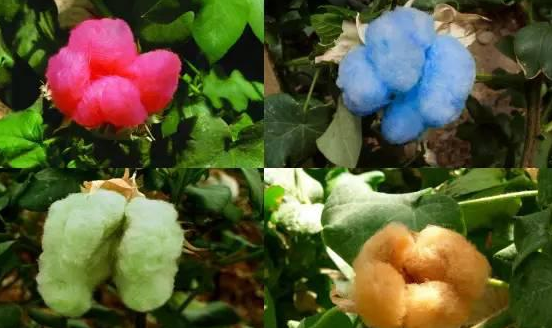Cotton fiber is formed by the elongation and thickening of cells on the epidermis of cotton ovules (which will develop into cotton seeds in the future). A cell grows into a fiber, with one end attached to the surface of the cotton seed and the other end closed. Cotton seeds are covered with cotton fibers, which is called seed cotton.

Raw cotton is divided into “fine-staple cotton” and “long-staple cotton” according to length.
Fine-staple cotton is a type of upland cotton with medium fiber density and length, mostly white or milky white. Most of the cotton grown in our country is fine-staple cotton, which has high yield. Most of the raw cotton on the market is fine-staple cotton. Long-staple cotton is a species of island cotton, which is thinner and longer than fine-staple cotton. It is mostly milky white or light brown and rich in mercerization. It is a raw material used for spinning high-end and special cotton textiles. Currently, supply exceeds demand, and my country’s main production of long-staple cotton is in Xinjiang.
Generally speaking, the longer the fiber length, the higher the length uniformity, the less short velvet, the finer the yarn can be spun, the more uniform the yarn dryness, the higher the strength, and the smooth surface, less hairiness, and easier dyeing. The better the color.
The way to distinguish fine velvet cotton from fine velvet cotton is to observe the length of its fibers. The average hand-tear length of fine-staple cotton is 23~33mm, and the average hand-tear length of long-staple cotton is 33~45mm. You can directly pull the raw cotton to observe. If it has been spun into yarn, you can unravel the yarn in reverse and pull out the fibers for observation.
The main component of cotton fiber is cellulose. Cellulose is a natural polymer compound with a chemical structural formula of
. The cellulose content of normal mature cotton fiber is about 94%. In addition, it contains a small amount of pentosan, wax, protein, fat, water-soluble substances, ash and other companions. Cotton wax makes the fiber smoother, reduces friction, and has good surface properties suitable for spinning. However, before bleaching and dyeing cotton yarn and cotton cloth, the cotton wax must be scouring to remove the cotton wax to ensure uniform dyeing. Cotton fibers with high sugar content are prone to winding around rollers and top rollers during the spinning process. In the past, cotton mills used steamed cotton to dilute the sugar, or sprayed it with an aqueous solution of glucoamylase and fresh yeast to reduce the sugar. Currently, sugar-eliminating agents composed of lubricants, antistatic agents, emulsifiers, etc. are used to spray cotton fibers to solve this problem.
Since the main component of cotton fiber is cellulose, it is more resistant to alkali than acid. Acid will cause cellulose to hydrolyze, causing macromolecules to break, thus destroying cotton fibers. Dilute alkali solution will not damage cotton fibers when treated at room temperature, but will cause the cotton fibers to swell. After the cotton fiber is treated in a certain concentration of sodium hydroxide solution or liquid ammonia, the fiber swells laterally, so that the cross section becomes round and the natural twist disappears, giving the fiber a silky luster. If the fiber is stretched while puffing, the internal structure of the fiber can be changed to a certain extent, thereby improving the fiber strength. This treatment method is called “mercerization”.
New cotton: Colored cotton
It is a new type of textile raw material cultivated using modern bioengineering technology, whose fibers have natural colors when the cotton is spun. Colored cotton is not treated with chemicals during processing and still retains the characteristics of natural fibers. The color of colored cotton comes from natural pigments, some of which (green, gray, brown) will oxidize when exposed to acid. Current colors of colored cotton: red, yellow, blue, brown, gray, purple, brown, etc.







